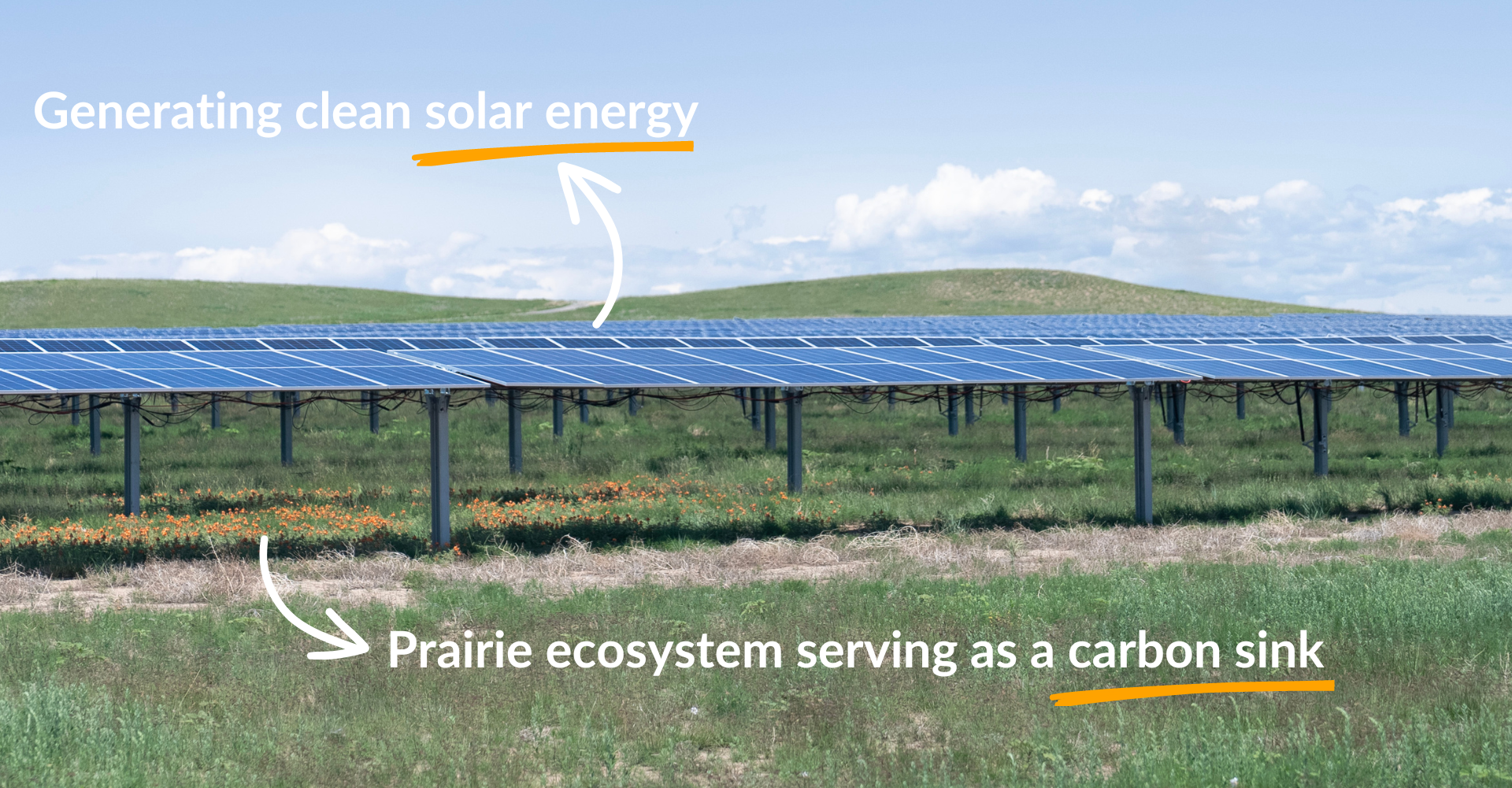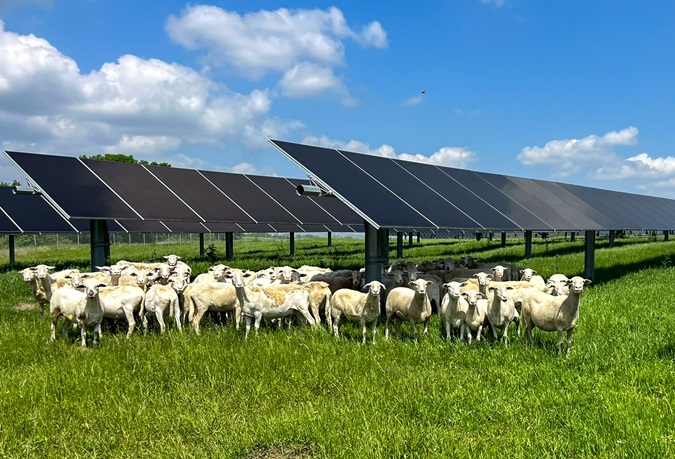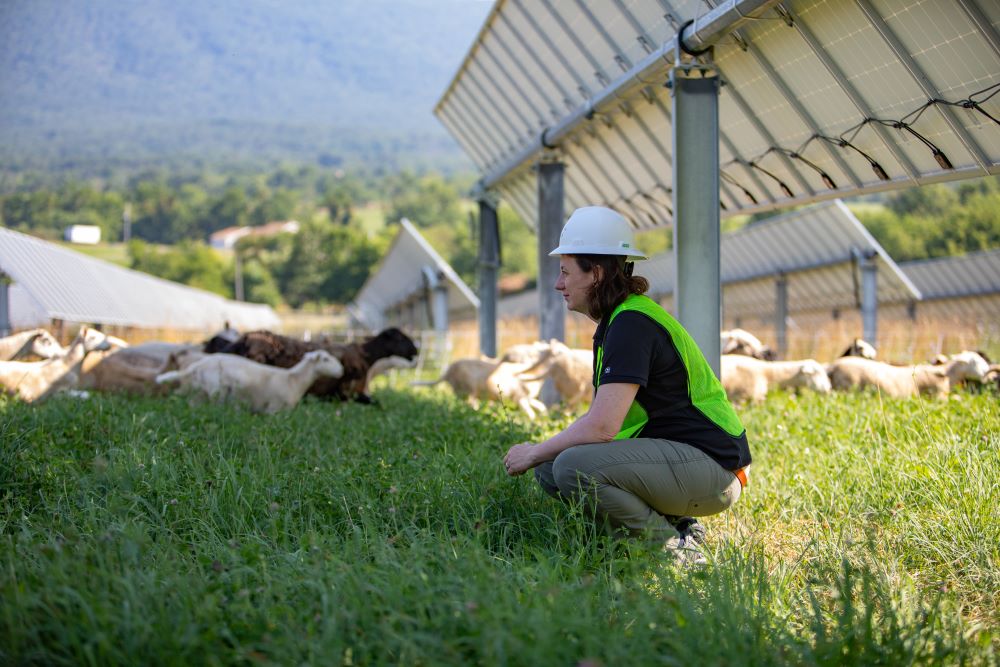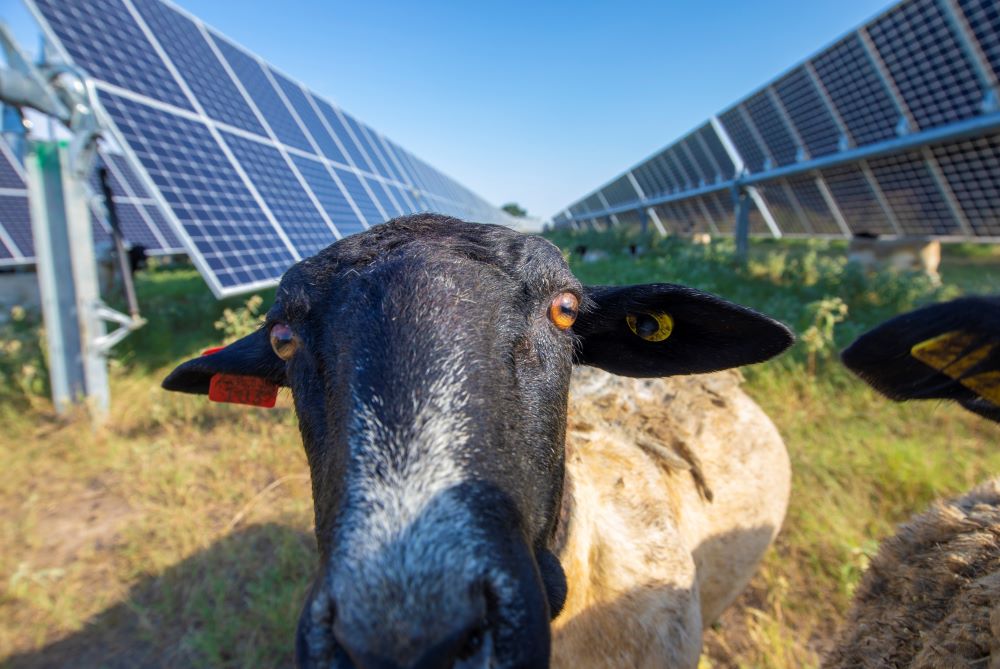Environmental research and monitoring
Solar farm, living laboratory: Participating in academic research at our solar farms
In recent years, the environmental management of solar farms has become an exciting area of academic research. Several Lightsource bp projects are participating in studies examining the ecology and economics of utility-scale solar.
Researching the benefits of pollinator conservation at Bellflower Solar
Advancing research on pollinator habitat at solar facilities is essential for understanding the benefits of co-located conservation, as well as practical implementation strategies. The Pollinator Habitat Aligned with Solar Energy (PHASE) study, funded by the U.S. Department of Energy Solar Energy Technology Office (SETO), will measure ecological benefits of varying types of pollinator habitat at utility- scale solar projects across the Midwest, including Bellflower, in addition to photovoltaic performance and costs.
Research at Lightsource bp’s Nittany Solar projects in Pennsylvania
In recent years, the environmental management of solar farms has become an exciting area of academic research, to assess how different practices affect the productivity of solar and agricultural enterprises and the land on which they operate. Two studies seeking to answer research questions around these topics are currently underway at Lightsource bp’s Nittany 1, 2 and 3 solar projects in Pennsylvania.
Monitoring long-term soil health improvements
We aim to create a healthy, resilient and full cover of plant species over the ground at our solar farms. We use agronomic science to choose seed mixes that improve soil quality, stability and water holding capacity.
When selecting plants for our solar facilities, we consider carbon capture potential as well. We choose deep rooted plants to transfer atmospheric carbon into the soil, along with partner species, such as nitrogen fixing plants to support them. When the root systems decompose, they become carbon-rich soil, which can remain underground for thousands of years. In this way, solar farms can act as “carbon sinks,” sequestering atmospheric CO2 underground. We are conducting soil testing at several of our US solar projects to measure change in soil carbon over time.

Soil carbon sequestration and monitoring in Colorado
At two projects in Pueblo, Colorado, the Lightsource bp team is taking steps beyond clean energy generation with an innovative Land Management and Biodiversity Plan. In addition to providing emissions-free energy, the sites will serve as a biodiversity haven and carbon “sink,” pumping CO2 from the air into the soil and vegetation on-site.
Soil samples have been collected to establish baseline soil carbon. Future sampling will determine the total amount of soil carbon increase over time, due to reestablishment of shortgrass prairie habitat. We predict that carbon storage in the site’s soil will increase about 17% over the project’s life.
Learn more about our Responsible Solar approach to environmental sustainability
Environment
Learn how we're maximizing the environmental sustainability of our solar projects
Biodiversity & Habitat Conservation
Learn about our commitment to increasing biodiversity at each of our solar projects






